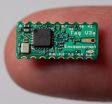(Press-News.org) A new study of high-tech startups that participated in the Rice Business Plan Competition (RBPC) shows that these entrepreneurs have a much higher rate of success than typical new ventures and are therefore more likely to contribute to job growth.
The study by the Rice Alliance for Technology and Entrepreneurship spans the 11-year life of the RBPC, the world's richest and largest business plan competition, which comprises teams of graduate students from throughout the world. The comprehensive and longitudinal study offers insights into the experiential factors that can help entrepreneurs launch a successful business.
Using data on the 354 RBPC graduate-student competition teams from 2001 to 2011, the study found:
199 (56 percent) went on to launch their companies after competing at the Rice competition.
128 of those (or 64 percent) are successful and still in business today. (Typically, only 20-50 percent of startups survive to their fifth anniversary.)
Past competitors have raised more than $460 million in early stage funding.
A conservative estimate of jobs created tops 1,000.
According to the Kauffman Foundation, in the past 30 years, all net job creation in the U.S. has taken place in firms less than five years old, and this is consistent with the experience at the Rice Business Plan Competition. The Kauffman Foundation is a private, nonpartisan foundation that works to harness the power of entrepreneurship and innovation to grow economies and improve human welfare.
"The study shows that university business plan competitions can go beyond simply being an academic exercise or educational experience," said Brad Burke, managing director of the Rice Alliance. "They can serve as a vehicle for building a robust entrepreneurial ecosystem and as a launching pad for new businesses, especially high-tech, high-growth startups."
"The Rice Business Plan Competition's track record is unparalleled in creating new, successful high-tech startups," said Kauffman Foundation Vice President Lesa Mitchell. "The competition provides access to venture capital and other early stage investors, strategic partners, mentors and service providers – not to mention more than $1 million in seed funding and other prizes – all critical resources for successfully launching a new company and creating jobs."
The study showed that as a result of the quality of the competitors and this access to investors, 25 percent of the successful startups from the competition have raised venture capital funding compared with less than 1 percent of startups that typically get venture capital funding. Of the total $460 million in funding raised, 62 percent came from venture funding, 13 percent from angel investors and 13 percent from government grants.
The RBPC results have shown to be a good predictor of a company's success, based on the winners and teams that reached the finals. All of the winners in the RBPC from 2004 to 2011 have been successful, are still in business and have raised more than $107 million in funding (with the exception of one team that decided to pursue other avenues to commercialize its technology). Of all the teams that reached the finals from 2001 to 2011, 56 percent have been successful and have raised more than $269 million in funding.
Teams that compete at the RBPC present their ventures to more than 250 venture capitalists, angel investors, corporate investors, mentors, successful entrepreneurs and other leaders from the business community, where they have a chance to get mentoring, feedback, capital and connections.
Entry into the Rice competition has become more competitive each year, and in 2012, less than 3 percent of the 1,600 applicants were accepted. The states with the largest number of competitors during the first 11 years were Texas, California, Illinois, Massachusetts and Georgia.
The universities with the largest number of teams accepted to compete at the RBPC include Rice University, Massachusetts Institute of Technology, University of Texas at Austin, University of Michigan, Johns Hopkins University, University of Arkansas, Carnegie Mellon University, University of Chicago, Southern Methodist University, University of Illinois at Chicago, Georgia Institute of Technology, Northwestern University, Duke University and Stanford University.
The study shows that the Rice Business Plan Competition provides a model that other organizations can follow to support entrepreneurs who, in return, will create jobs and build economic prosperity in the U.S.
INFORMATION:
For a complete copy of the study, go to http://www.alliance.rice.edu/uploadedFiles/RBPC/2012_RBPC_ImpactReport.pdf
END
It's a high-pressure environment within solid tumors. Abnormal blood and lymphatic vessels cause fluids to accumulate, and the uncontrolled proliferation of cancer cells within limited space leads to the buildup of what is called solid stress. Both types of pressure can interfere with the effectiveness of anticancer treatments, but while strategies have been developed that reduce fluid pressures, little has been known about the impact of solid stress or potential ways to alleviate it. Now a Massachusetts General Hospital (MGH) research team has identified factors that ...
If two birds meet deep in the forest, does anybody hear? Until now, nobody did, unless an intrepid biologist was hiding underneath a bush and watching their behavior, or the birds happened to meet near a research monitoring station. But an electronic tag designed at the University of Washington can for the first time see when birds meet in the wild.
A new study led by a biologist at Scotland's University of St. Andrews used the UW tags to see whether crows might learn to use tools from one another. The findings, published last week in Current Biology, supported the theory ...
PASADENA, Calif.—At any given moment, millions of cells are on the move in the human body, typically on their way to aid in immune response, make repairs, or provide some other benefit to the structures around them. When the migration process goes wrong, however, the results can include tumor formation and metastatic cancer. Little has been known about how cell migration actually works, but now, with the help of some tiny worms, researchers at the California Institute of Technology (Caltech) have gained new insight into this highly complex task.
The team's findings are ...
Los Angeles, CA (September 20, 2012) SAGE and The Society for Medical Decision Making are pleased to announce the release of seven new reports that will have a significant impact on modeling techniques in health care research and medical decision making. Written by the Modeling Good Research Practices Task Force, a special group of leading experts in decision analysis, economics, simulation, and health policy, these reports were published in a special issue of Medical Decision Making (MDM), a SAGE journal.
"The history of decision and economic modeling to support health ...
Investigators at Northwestern University Feinberg School of Medicine have identified two promising therapies to treat patients with acute megakaryocytic leukemia (AMKL), a rare form of leukemia where the number of cases is expected to increase with the aging population.
The disease is characterized by an overload of white blood cells that remain forever young because they can't mature into specialized cells. Published in a recent issue of the journal Cell, the study found that the drug with the generic name alisertib (MLN8237), induced division and growth of healthy ...
The pressures of global trade may heighten disease incidence by dictating changes in land use. A boom in disease-carrying ticks and chiggers has followed the abandonment of rice cultivation in Taiwanese paddies, say ecologist Chi-Chien Kuo and colleagues, demonstrating the potential for global commodities pricing to drive the spread of infections. Their work appears in the September issue of ESA's journal Ecological Applications.
After Taiwan joined the World Trade Organization in 2001, active cultivation of rice paddies fell from 80 percent to 55 percent in just three ...
Scientists and forecasters have been analyzing Tropical Storm Nadine using various NASA satellites as NASA's Global Hawk flew over the storm gathering information. Both the Global Hawk and NASA's TRMM satellite noticed that Nadine has continued to display tropical characteristics, indicating that it has not transitioned to an extra-tropical storm.
Forecasters noted that Nadine could have started transitioning into an extra-tropical storm, because there was little significant rainfall near Nadine's center of circulation yesterday, Sept. 19. However, satellite data and ...
Tried-and-true techniques could help optimize oilseed yield for biodiesel production, according to studies conducted by U.S. Department of Agriculture (USDA) scientists.
For more than 30 years, near infrared (NIR) reflectance spectroscopy has been used as a rapid and nondestructive method for measuring protein, moisture, and oil levels in whole grains. Now Agricultural Research Service (ARS) research leader Dan Long is studying how to use remote sensing tools to quickly assess seed oil quality and quantity before and after harvest.
ARS is USDA's chief intramural scientific ...
The sun's atmosphere dances. Giant columns of solar material – made of gas so hot that many of the electrons have been scorched off the atoms, turning it into a form of magnetized matter we call plasma – leap off the sun's surface, jumping and twisting. Sometimes these prominences of solar material, shoot off, escaping completely into space, other times they fall back down under their own weight.
The prominences are sometimes also the inner structure of a larger formation, appearing from the side almost as the filament inside a large light bulb. The bright structure around ...
In a preliminary clinical trial, investigators at Johns Hopkins have shown that even partially-matched bone marrow transplants can eliminate sickle cell disease in some patients, ridding them of painful and debilitating symptoms, and the need for a lifetime of pain medications and blood transfusions. The researchers say the use of such marrow could potentially help make bone marrow transplants accessible to a majority of sickle cell patients who need them.
After a median follow-up of two years, the transplants successfully eliminated sickle cell disease in 11 of 17 patients. ...



